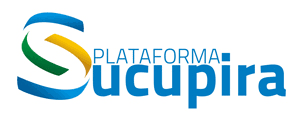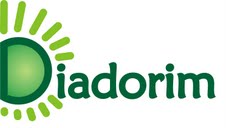Simulação Numérica da Termofluidodinâmica entorno de cilindros isotérmicos em tandem usando o método de fronteira imersa
Palavras-chave:
Convecção Forçada, Método de Fronteira Imersa, Modelo de SmagorinskyResumo
Um Método de Fronteira Imersa (IBM) está sendo desenvolvido para a interação fluido-corpo, considerando, neste trabalho, a transferência de calor por convecção forçada e o início da turbulência em termofluidodinâmica bidimensional (2D) em torno de cilindros isotérmicos em tandem, imersos em fluido newtoniano incompressível. O movimento e a temperatura do fluido são definidos em uma malha Lagragiana. Um Modelo Físico Virtual (VPM) é utilizado para a difusão de forças interfaciais dentro do escoamento, garantindo a imposição da condição de contorno de não deslizamento. Este modelo avalia dinamicamente, não apenas as forças que o fluido exerce sobre a superfície sólida, mas a troca de calor entre eles. Portanto, este trabalho apresenta as equações de Navier-Stokes juntamente com a equação de Energia, sob condições de contorno fisicamente apropriadas. Para calcular a viscosidade de início de turbulência foi utilizado o Modelo Smagorinsky (SM), implementado no contexto do Large Eddy Simulation Model (LESM). Este trabalho confirma que, a jusante do corpo do penhasco imerso, a recirculação: i) aumenta com o aumento do número de Reynolds, mantendo os números de Richardson constantes, e ii) diminui com o aumento do número de Richardson, preservando o número de Reynolds constante. Também confirma a geração das plumas térmicas se movendo para cima. Os resultados são validados com resultados numéricos anteriores, considerando diferentes números de Reynolds.
Downloads
Referências
Badr, H. M., & Dennis, S. C. R. (1985). Time-dependent viscous flow past an impulsively started rotating and translating circular cylinder. Journal of Fluid Mechanics, 158, 447-488.
Badr, H. M., Coutanceau, M., Dennis, S. C. R., & Menard, C. (1990). Unsteady flow past a rotating circular cylinder at Reynolds numbers 103 and 104. Journal of Fluid Mechanics, 220, 459-484.
Ashrafizadeh, A. and Hosseinjani, A. A. (2017). A Phenomenological Study on the Convection Heat Transfer around Two Enclosed Rotating Cylinders via an Immersed Boundary Method. International Journal of Heat and Mass Transfer, 107, 667-685.
Santos, R. D., Gama, S.M., & Camacho, R. G. (2018). Two-Dimensional Simulation of the Navier-Stokes Equations for Laminar and Turbulent Flow around a Heated Square Cylinder with Forced Convection. Applied Mathematics, 9(03), 291–312.
Santos, R.D.C. and Gama, S.M.A. (2021). Two-Dimensional Isothermal and Newtonian Flow in Complex Geometries. Applied Mathematics, 12, 91-129.
Silva, A. L. E., Silveira-Neto, A. and Damasceno, J. J. R. (2003). Numerical Simulation of Two-Dimensional Flows over a Circular Cylinder using the Immersed Boundary Method. J. Comput. Phys., 189, 351–370.
Smagorinsky, J. (1963) General Circulation Experiments with the Primitive Equations: I. The Basic Experiment. Monthly Weather Review, 91, 99–164.
Schneider, G. E.; Zedan, M. A Modified Strongly Implicit Procedure for the Numerical Solution of Field Problems. Numerical Heat Transfer, v. 4, n.01, pp. 1-19, 1981.
Downloads
Publicado
Como Citar
Edição
Seção
Licença
Copyright (c) 2023 Revista Interdisciplinar de Pesquisa em Engenharia

Este trabalho está licenciado sob uma licença Creative Commons Attribution-NoDerivatives 4.0 International License.
Autores que publicam nesta revista concordam com os seguintes termos:
Autores mantém os direitos autorais e concedem à revista o direito de primeira publicação, sendo o trabalho simultaneamente licenciado sob a Creative Commons Attribution License o que permite o compartilhamento do trabalho com reconhecimento da autoria do trabalho e publicação inicial nesta revista.
Autores têm autorização para assumir contratos adicionais separadamente, para distribuição não-exclusiva da versão do trabalho publicada nesta revista (ex: publicar em repositório institucional ou como capítulo de livro), com reconhecimento de autoria e publicação inicial nesta revista.
Autores têm permissão e são estimulados a publicar e distribuir seu trabalho online (ex: em repositórios institucionais ou na sua página pessoal) a qualquer ponto antes ou durante o processo editorial, já que isso pode gerar alterações produtivas, bem como aumentar o impacto e a citação do trabalho publicado.









